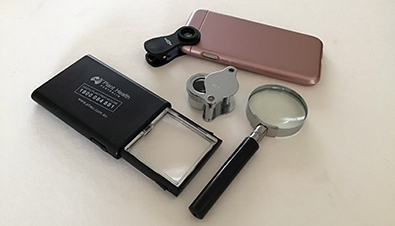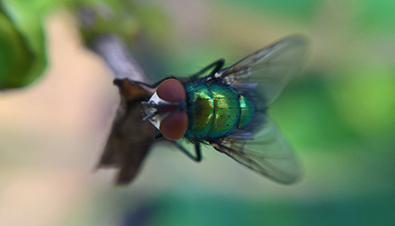Read the latest information on
Foot-and-mouth disease

A magnifying lens of some sort and a macro lens for a mobile device to take photos should be part of your biosecurity toolkit
You’ve all seen them, right? Nice photos of pests you’ve been asked to keep an eye out for. But when you actually take a closer look, you realise they would be much smaller in real life.
Plant Health Australia’s Rod Turner warns people not to be fooled by all of the enlarged photos of pests in fact sheets.
“The small size of your average pest isn’t going to make it easy for you find it, let alone see it in enough detail to identify it. They are often much smaller than you realise,” said Rod.
That’s what makes a handheld magnifying lens an essential part of any biosecurity toolkit.
“If the full-grown adult pest is less than a millimetre in length, the eggs, newly hatched larvae or young adults will be even smaller.”
“If you need to look at mouth parts, the tail end, or characteristic spots on wings or something like that you are definitely going to need about 5 to 10x magnifying lens.”
Jewellers or watchmakers ‘loupes’ are available for 10 times magnification. Some include a light so they can be used in low light situations.
Being asked to spot something unusual compared to your usual suspects might not be that simple.
“It’s a big ask to identify some of these pests, and even if your eyes are pretty good it’s worth investing in a magnifying lens so you don’t overlook anything important.”

This photo of a fly was taken using a macro lens on a mobile phone.
If you do find something unusual, a macro lens that attaches to a mobile phone so that you can take a photo of it is a really useful thing to have nearby.
A cutting knife, or pair of secateurs, depending on what you are looking for and where, are useful too.
Generally, the normal camera on your mobile device should be used to get a broader view of the situation, and a photo of the overall damage to the plant or number of pests. This can be useful when trying to identify a pest or disease.
Clearer photos will help identify the problem. Below are some simple tips to help you.
Some tips on how to take photos of insects and disease symptoms have been included in this fact sheet.